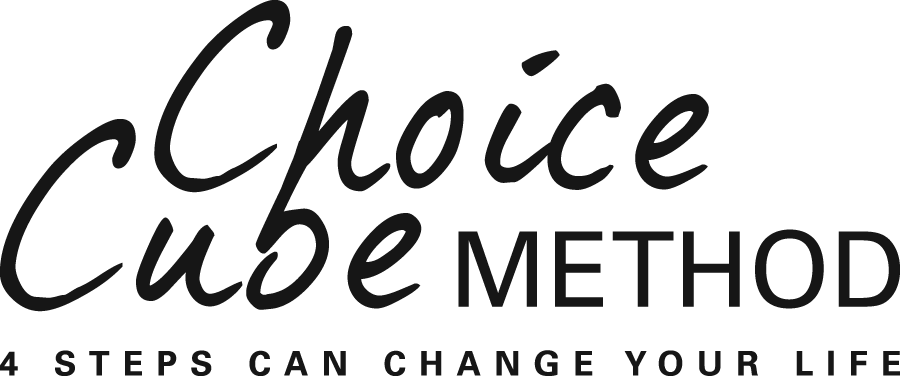Frank, a handsome, athletic man in his early 50’s felt old. He didn’t seem to have the same energy and drive he had when he was younger. His kids teased him about losing his hair and he had put on twenty pounds. He felt out of shape and unattractive.
The “story,” or “meaning attached” by Frank to aging, was negative and only part of reality. He was dwelling on his losses and living with a one-sided negative story.
Even worse, he was telling himself that his wife of twenty-five years was still beautiful and sexy and that she was losing interest in him. He was so focused on his losses--the negative side of reality--that he had lost track of his strengths and options. His self-talk was making him feel worse and worse and he didn’t even realize it.
Frank's negative story had taken over his life, and he was in a downward spiral.
Let’s imagine that Frank continues this way. He gives up and continues to focus on his losses, including the loss of his athletic youthfulness and physique. Oh, don’t forget his hair. He may ignore how stressed he feels and continue to stew in regret. He may dwell on his anger, and his fear that his wife will reject him. Then to make himself temporarily feel better, he may drink a little more, hang out at Hooters, flirt with the new girl at work, or buy a “muscle” car.
These behaviors can give him a temporary lift, but none of these strategies get to the root of his problem--the story he is telling himself. In fact, they may make things worse.
If Frank continues to focus on his losses, his anger, fear, and regret, it’s likely that he will create situations that cause the very thing he fears to become more and more real. As a result, he will become increasingly stuck and unable to change.
What can Frank do instead? The answer is not to pump himself up trying to be positive. The answer is to see reality clearly—the big picture--and have the tools to choose whether he wants to continue to focus on the negative side of reality or to shift his focus to the positive side of reality.
Once he makes up his mind that he’s ready to change, there are many ways to do this. One such way is the Choice-Cube® Method, a new, time-tested, step-by-step system for choice and change. This approach would give Frank a mental checklist, simple tools, and 4 steps that work together in a logical, but compassionate way to help Frank manage his thoughts, feelings, and behaviors.
If Frank wakes up and admits that he’s in a bad place, he can use the method to change his focus and the story he’s telling himself. He can get his thinking brain and his emotional brain to work together and find the freedom to make wise choices and changes. This approach can be found in Become the Person You Were Meant to Be – The Choice-Cube Method: Step by Step to Choice and Change.
Let’s imagine that Frank challenges the negative meaning he’s attaching to aging and takes a more positive focus. Let’s assume that he uses the Choice-Cube to tools to stop his current story cold and do something different. What would be the results?
Perhaps he would stop being a couch potato and drink less so he could lose some weight. He might go back to work on that antique car in the garage or write words to the rock-and-roll tune that keeps running though his head. Frank needs a challenge in his life.
Regarding his wife, maybe he could start going to the gym with is her or find some other interest outside of work that they could share to put some excitement back in their lives. He could make an effort to spend more alone time with her so they could know and appreciate each other on a deeper level.
So, how does Frank uncover and change those meanings—his story? The way to do this is always the same. First, he needs to stand back and objectively look at what going on inside of him. He needs to become a “conscious observer” of how he reacts and the meanings he attaches to his wife, aging, his losses, and his life in general. Obviously, he can’t change what he’s not aware of.
Equally as importantly, he can use the tools and 4 steps to expose and change the inward reactions of his body (stress), emotions, the thoughts and pictures in his mind, and his will/desires. The emphasis is on Frank’s inward reactions because in the end, no matter what he tries to change, behaviors or beliefs, his four inward reactions will have to change.
Note: Will/desire is a little tricky because Frank has only three choices. He can want to: (1) avoid or (2) control a person (including himself), a thing, action, or problem. Or he can want to get to the root of the problem with honesty and compassion and (3) resolve an issue—“win-win”--everyone feels they get a fair deal. What he wants—his will/desires--determines what he does.
The benefits of changing inward reactions are huge! Let’s imagine that Frank decides to take responsibility for his thoughts, feelings, and behaviors and becomes a conscious observer. At first, he will probably be uncomfortable, maybe sad, angry, or feel shame. But he won’t be stuck!
He can use the tools and 4 steps to change his inward reactions and get immediate relief from painful thoughts and emotions. He can let go of feelings such as fear, anger, shame, and feeling overwhelmed and numb. Then instead of doing the same old thing with the same results, he can choose to do something different.
Now, he can get to the whole truth of his situation. (The truth includes not only his losses, but also his strengths, options and possibilities.) This allows him to shift his focus and the meanings he’s attaching, He can begin to choose how he wants to handle himself and his situation. This is life-changing!
You can have the same freedom of choice. You can change your story. You can stop focusing on your losses and difficulties. You can start focusing on your options, strengths, and possibilities and choose different behaviors. Staying aware and changing your inward reactions will give you choice, and freedom of choice opens the door to change.
You can stop being your worst enemy and begin to be your best friend. Furthermore, when repeatedly change all four inward reactions, you can change yourself in ways you never imagined. And your changes will last!
Frank is at a critical choice point in his life. Will he take the easy way of “short-term relief/gain but long-term pain?” Or will he screw up his courage and go for “short-term pain but long-term gain?” What about you?
How can the Choice-Cube Method help? Using the tools to take the following 4 steps of the Choice-Cube Method can help you change your four inward reactions.
Step 1:RECOGNIZE - Focus on your body and use the Choice-Cube tools to manage your stress.
tep 2:INTERRUPT/RELEASE - Label your emotions and use the Choice-Cube tools to let go of those emotions safely and appropriately. (Your emotions lock in limited and distorted thinking. So, after you use the tools to release your emotions appropriately, you will see both the negative and positive sides of reality more clearly.)
Step 3: REFOCUS - In your mind, Look at both sides of reality. Imagine holding one on your left side and one on your right side. Now, seesaw between the two until you can choose which side you want to focus on, negative or positive. Then use the Choice-Cube tools to help you make the healthy choice. Remember, this is an important choice, because, whatever you choose will get you more of the same!
Step 4: REPLACE/ACT - Once you have managed your body (stress), your negative emotions, thoughts and pictures, you can direct your will/desires. You can choose what you want to do. Do you want to do something fresh and different and resolve the situation “win-win,” Or do you want to repeat the same old inward reactions trying to control or avoid the person, thing, action, or problem inappropriately. Be as specific and detailed as possible.
To help you get a handle on your inward reactions: body, emotions, mind, and will, you can take the Choice-Cube Profile on my website www.choicecube.com. To learn how to use the Choice-Cube tools or gain a deeper understanding of the method, check out my book, Become the Person You Were Meant to Be - The Choice-Cube Method. Click here http://amzn.to/Xw2YMZ.



